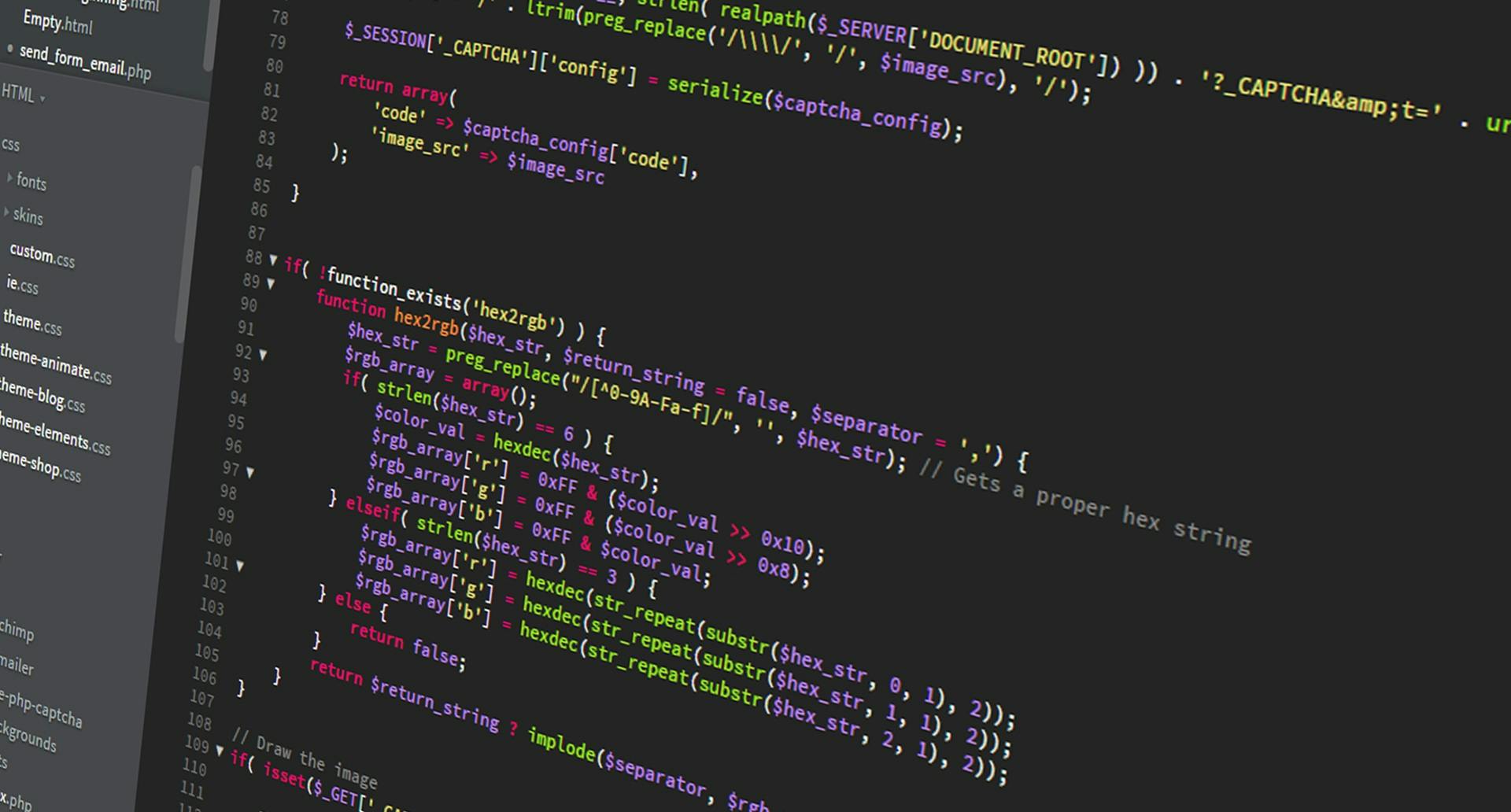Sarah Jenkins
DevOps Engineer
April 28, 2023
15 min read

DevOps has revolutionized how teams build, deploy, and maintain web applications. By breaking down the traditional silos between development and operations, DevOps practices enable organizations to deliver high-quality software faster and more reliably. This article explores essential DevOps best practices that can transform your web development workflow and help your team achieve continuous delivery excellence.
Whether you're just beginning your DevOps journey or looking to refine your existing processes, these practices will help you build a more efficient, collaborative, and resilient development pipeline.
Before diving into specific practices, it's important to understand the core principles that underpin the DevOps approach:
DevOps is fundamentally about breaking down barriers between teams. Developers, operations engineers, QA specialists, and other stakeholders must work together with shared responsibility for the entire software lifecycle.
Manual processes are error-prone and don't scale. Automating repetitive tasks—from testing to deployment—reduces human error and frees up time for more valuable work.
DevOps is not a destination but a journey of ongoing refinement. Teams should regularly reflect on their processes and look for opportunities to improve.
Data-driven decision making is essential. Collect metrics on both technical performance and team productivity to guide improvements.
Infrastructure as Code treats infrastructure configuration as software code, allowing you to version, test, and deploy infrastructure changes with the same rigor as application code. This approach eliminates environment inconsistencies, reduces manual configuration errors, and enables rapid scaling.
Version Control Everything: Store all infrastructure code in the same version control system as your application code. This provides a complete history of changes and enables rollbacks when needed.
Use Declarative Tools: Tools like Terraform, AWS CloudFormation, or Pulumi allow you to declare the desired state of your infrastructure rather than writing procedural scripts.
Modularize Infrastructure Code: Create reusable modules for common infrastructure patterns to promote consistency and reduce duplication.
Test Infrastructure Changes: Implement automated tests for your infrastructure code to catch issues before they reach production.
Here's a simple example of infrastructure as code using Terraform to provision a web server on AWS:
# Define AWS provider
provider "aws" {
region = "us-west-2"
}
# Create a VPC
resource "aws_vpc" "main" {
cidr_block = "10.0.0.0/16"
tags = {
Name = "main-vpc"
Environment = "production"
}
}
# Create a web server instance
resource "aws_instance" "web" {
ami = "ami-0c55b159cbfafe1f0"
instance_type = "t2.micro"
vpc_security_group_ids = [aws_security_group.web.id]
tags = {
Name = "web-server"
Environment = "production"
}
user_data = <<-EOF
#!/bin/bash
echo "Hello, World" > index.html
nohup python -m SimpleHTTPServer 80 &
EOF
}Continuous Integration involves automatically building and testing code changes whenever they're committed to version control. This practice catches integration issues early and ensures that the codebase remains in a deployable state.
Commit Code Frequently: Developers should integrate their changes into the main branch at least daily to minimize integration challenges.
Maintain a Comprehensive Test Suite: Your CI pipeline should include unit tests, integration tests, and end-to-end tests to catch different types of issues.
Enforce Code Quality Standards: Integrate static code analysis, linting, and code style checks into your CI pipeline to maintain code quality.
Make Builds Self-Testing: Builds should automatically run the test suite and fail if tests don't pass.
Keep the Build Fast: Aim for CI builds that complete in less than 10 minutes to provide quick feedback to developers.
Here's an example of a CI pipeline configuration using GitHub Actions for a Node.js application:
name: CI Pipeline
on:
push:
branches: [ main, develop ]
pull_request:
branches: [ main, develop ]
jobs:
build-and-test:
runs-on: ubuntu-latest
steps:
- uses: actions/checkout@v2
- name: Set up Node.js
uses: actions/setup-node@v2
with:
node-version: '16'
- name: Install dependencies
run: npm ci
- name: Lint code
run: npm run lint
- name: Run unit tests
run: npm test
- name: Build application
run: npm run build
- name: Run integration tests
run: npm run test:integrationContinuous Delivery extends CI by automatically deploying all code changes to a testing or staging environment after the build stage. This ensures that your software is always in a deployable state, ready to be released to production with minimal manual intervention.
Automate Deployment Processes: Create scripts or use deployment tools to automate the entire deployment process, eliminating manual steps.
Implement Environment Parity: Keep development, testing, staging, and production environments as similar as possible to catch environment-specific issues early.
Use Feature Flags: Decouple deployment from release by using feature flags to enable or disable features without changing code.
Implement Blue-Green Deployments: Maintain two identical production environments, switching between them for zero-downtime deployments.
Automate Database Migrations: Include database schema changes in your deployment pipeline with automated migration scripts.
Extending our CI example, here's how a CD pipeline might look in GitHub Actions:
name: CI/CD Pipeline
on:
push:
branches: [ main, develop ]
pull_request:
branches: [ main, develop ]
jobs:
build-and-test:
# Same as previous example
deploy-to-staging:
needs: build-and-test
if: github.ref == 'refs/heads/develop'
runs-on: ubuntu-latest
steps:
- uses: actions/checkout@v2
- name: Set up Node.js
uses: actions/setup-node@v2
with:
node-version: '16'
- name: Install dependencies
run: npm ci
- name: Build application
run: npm run build
- name: Deploy to staging
run: |
# Deploy to staging environment
npm run deploy:staging
deploy-to-production:
needs: build-and-test
if: github.ref == 'refs/heads/main'
runs-on: ubuntu-latest
steps:
- uses: actions/checkout@v2
- name: Set up Node.js
uses: actions/setup-node@v2
with:
node-version: '16'
- name: Install dependencies
run: npm ci
- name: Build application
run: npm run build
- name: Deploy to production
run: |
# Deploy to production environment
npm run deploy:productionDevOps doesn't end with deployment. Comprehensive monitoring and observability practices are essential for understanding system behavior, detecting issues, and continuously improving your application.
Implement the Four Golden Signals: Monitor latency, traffic, errors, and saturation as baseline metrics for all services.
Set Up Centralized Logging: Aggregate logs from all services and infrastructure components in a central location for easier troubleshooting.
Implement Distributed Tracing: For microservices architectures, use distributed tracing to track requests as they flow through different services.
Create Actionable Alerts: Configure alerts that are specific, actionable, and avoid alert fatigue.
Build Dashboards for Visibility: Create dashboards that provide at-a-glance views of system health and performance.
A common monitoring stack for web applications might include:
DevSecOps integrates security practices throughout the development lifecycle rather than treating it as a separate phase. This "shift left" approach catches security issues earlier when they're less expensive to fix.
Automate Security Testing: Integrate security scanning tools into your CI/CD pipeline, including:
Implement Least Privilege: Ensure that services, containers, and users have only the permissions they need to function.
Secure Your Secrets: Use dedicated secrets management tools like HashiCorp Vault or AWS Secrets Manager rather than hardcoding sensitive information.
Conduct Regular Security Training: Ensure that all team members understand security best practices and common vulnerabilities.
Implement Compliance as Code: Automate compliance checks to ensure that your infrastructure and applications meet regulatory requirements.
Here's how security scanning might be integrated into a CI/CD pipeline:
name: CI/CD with Security
on:
push:
branches: [ main, develop ]
pull_request:
branches: [ main, develop ]
jobs:
security-scan:
runs-on: ubuntu-latest
steps:
- uses: actions/checkout@v2
- name: Set up Node.js
uses: actions/setup-node@v2
with:
node-version: '16'
- name: Install dependencies
run: npm ci
- name: Run dependency vulnerability scan
run: npm audit
- name: Run SAST scan
run: |
npm install -g @sonarqube/scanner
sonar-scanner
- name: Run container scan
run: |
docker build -t myapp:latest .
trivy image myapp:latest
build-and-test:
needs: security-scan
# Continue with build and deployment stepsContainers provide a consistent, isolated environment for applications, making them easier to deploy and manage across different environments. Container orchestration platforms like Kubernetes automate the deployment, scaling, and management of containerized applications.
Build Minimal Images: Use multi-stage builds and minimal base images to reduce container size and attack surface.
Never Run as Root: Configure containers to run as non-root users to limit potential damage from container breakouts.
Make Containers Immutable: Treat containers as immutable infrastructure—never modify running containers; instead, deploy new ones.
Implement Health Checks: Add health and readiness probes to help orchestration platforms manage container lifecycle.
Use Container Registries: Store container images in secure, private registries with vulnerability scanning.
Here's an example of a well-structured Dockerfile for a Node.js application:
# Build stage FROM node:16-alpine AS build WORKDIR /app # Copy package files and install dependencies COPY package*.json ./ RUN npm ci # Copy application code COPY . . # Build the application RUN npm run build # Production stage FROM node:16-alpine # Set non-root user USER node WORKDIR /app # Copy only necessary files from build stage COPY --from=build --chown=node:node /app/package*.json ./ COPY --from=build --chown=node:node /app/node_modules ./node_modules COPY --from=build --chown=node:node /app/dist ./dist # Set environment variables ENV NODE_ENV=production # Expose application port EXPOSE 3000 # Health check HEALTHCHECK --interval=30s --timeout=3s CMD wget -qO- http://localhost:3000/health || exit 1 # Start the application CMD ["node", "dist/main.js"]
Microservices architecture breaks applications into smaller, independently deployable services. This approach enables teams to develop, deploy, and scale services independently, but it also introduces complexity in service communication and management.
Design Around Business Capabilities: Structure microservices around business domains rather than technical functions.
Implement API Gateways: Use API gateways to handle cross-cutting concerns like authentication, rate limiting, and request routing.
Adopt Service Mesh: For complex microservices architectures, implement a service mesh like Istio or Linkerd to manage service-to-service communication.
Implement Circuit Breakers: Protect services from cascading failures with circuit breakers that fail fast when downstream services are unavailable.
Design for Failure: Assume that any service can fail and implement resilience patterns like retries, timeouts, and fallbacks.
A service mesh provides several advantages for microservices architectures:
Effective configuration management ensures that applications can be configured differently across environments without code changes. This separation of configuration from code is essential for maintaining a single codebase that can be deployed to multiple environments.
Externalize Configuration: Store configuration outside your application code, using environment variables, config files, or configuration services.
Use Configuration Hierarchies: Implement a configuration hierarchy that allows for environment-specific overrides of default values.
Secure Sensitive Configuration: Use secrets management tools to handle sensitive configuration like API keys and database credentials.
Version Configuration: Track changes to configuration in version control, separate from application code when appropriate.
Validate Configuration: Implement validation to catch configuration errors early, before they cause runtime issues.
Several tools can help with configuration management:
Chaos Engineering involves deliberately introducing failures into your system to test its resilience and identify weaknesses before they cause real outages. This practice helps build more robust systems that can withstand unexpected failures.
Start Small: Begin with controlled experiments in non-production environments before moving to production.
Define Steady State: Establish metrics that define normal system behavior before running experiments.
Hypothesize About Failure: Form hypotheses about how the system will respond to specific failures.
Minimize Blast Radius: Limit the potential impact of experiments, especially in production.
Learn and Improve: Use the results of chaos experiments to improve system resilience.
Some typical chaos experiments include:
Tools like Chaos Monkey (from Netflix), Gremlin, or Litmus can help automate chaos experiments.
To improve your DevOps practices, you need to measure their effectiveness. Key metrics help teams understand their current performance and track improvements over time.
Deployment Frequency: How often you deploy code to production.
Lead Time for Changes: The time it takes for a code change to go from commit to production.
Mean Time to Recovery (MTTR): How quickly you can recover from failures.
Change Failure Rate: The percentage of deployments that cause a failure in production.
Availability: The percentage of time your service is available to users.
Error Rates: The frequency of application errors experienced by users.
Performance: Response times and throughput of your application.
To get the most value from DevOps metrics:
Let's examine how a fictional e-commerce company, RetailNow, transformed their development process by implementing DevOps practices:
RetailNow implemented the following changes:
After 12 months, RetailNow achieved:
DevOps is not just about tools or processes—it's a cultural and technical transformation that enables organizations to deliver better software faster. By implementing the best practices outlined in this article, you can build a more efficient, reliable, and collaborative development workflow.
Remember that DevOps is a journey, not a destination. Start with small, incremental changes, measure their impact, and continuously refine your approach based on what works for your team and organization.
The most successful DevOps implementations focus on people first, processes second, and tools third. By fostering a culture of collaboration, continuous learning, and shared responsibility, you'll create an environment where DevOps practices can truly thrive.

How serverless computing is changing web development and when it makes sense for your projects.

Techniques and strategies to improve the speed and responsiveness of your web applications.

Explore the latest approaches to web architecture that prioritize performance, scalability, and maintainability.